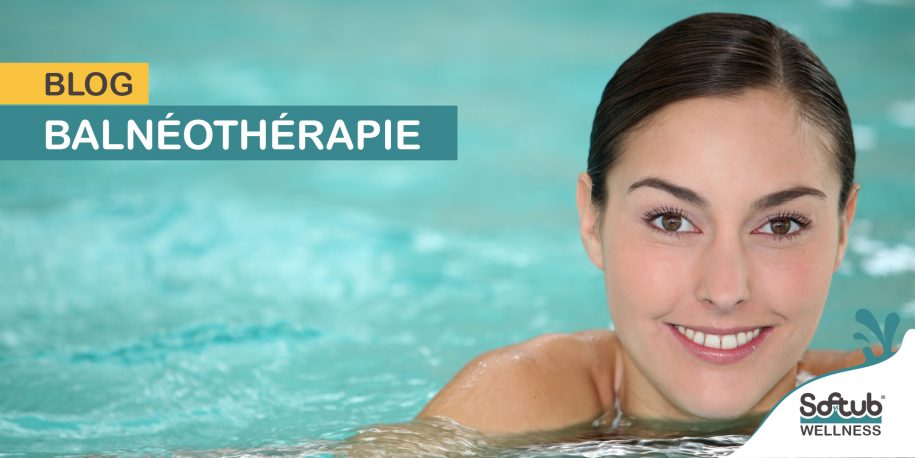Balneotherapy, discover the benefits of a spa treatment
Hot water has been used for thousands of years, in cultures and places far away, to treat musculoskeletal pain.
Distinct sites with unique physical and chemical qualities have attracted the attention of people suffering from a wide range of problems traditionally grouped under the heading of "rheumatism", as well as for social, ritual and recreational purposes.
In this article, we will explore the role of water therapy, in particular thermal cures (balneotherapy)
What is balneotherapy?
Balneotherapy is a set of water-based treatments, typically using natural hot springs, mud, mineral water or sea water to promote relaxation, reduce pain, muscle and joint soreness, improve circulation, stimulate the immune system and revitalise the body.
Origins of balneotherapy
The word balneotherapy is of Greek origin and is composed of "balneo", meaning "bath", and "therapy", meaning "treatment". Bathing has been used for thousands of years as a way to wash, relax and heal the body.
Archaeologists have found bathrooms in the palace of Knossos dating back as far as the 18th century BC and evidence that people were bathing in hot springs, lakes and seas as early as the 1st century BC. Bathing was very popular with the Romans and some of their baths still exist today.
Want to know more about the history of spas across civilizations and check out our Instagram account, you'll find a carousel with a historical overview for thousands of years @SoftubWelness
Balneotherapy in combination
Since balneotherapy literally means "healing with baths", the question is often asked, is it just baths and nothing more? The answer is of course no: today, balneotherapy includes many different treatments and is often combined with other spa therapies, thus creating a complete and holistic healing effect.
Balneotherapy and hydrotherapy
Balneotherapy is also often combined with hydrotherapy, which focuses more on exercise and muscle regeneration using water. There is still confusion between hydrotherapy and balneotherapy. The former simply uses water, while the latter uses natural thermal mineral water.
Thermal therapy uses a number of different treatment methods, including hydrotherapy and balneotherapy, and creates a special therapeutic atmosphere by changing the environment and lifestyle.
The benefits of balneotherapy
A hot bath is a wonderful thing. It warms up the whole body, relaxes us, makes the muscles supple, the blood vessels dilate and we can relax. In addition, with a thermal water spa bath, is often combined with medicinal substances dissolved in the water, they are absorbed through the skin and also through the respiratory tract.
Depending on the composition of the thermal water, these substances can have different benefits for the body. For example, they may stimulate the metabolism or have a pain-relieving effect. In some cases, thermal spring water also contains other additives such as essential oils. These are usually selected and customised to the individual to further enhance the positive effect of the bath.
Some classic types of balneotherapy
Spring water baths : Due to the different mineral compositions, each type of spring water is suitable for different health problems.
Salt water bath: the water is either naturally salty (i.e. from a salt lake or sea) or with added bath salts.
Sulphur bath : spring water with a high sulphur content.
Mud bath : Mineral mud slightly diluted with spring water.
Oil bath : Spring water with added herbal oil.
How is balneotherapy practiced?
Traditional balneotherapy involves immersion in natural mineral spring waters; the best known sites are the Dead Sea in Jordan, the Kangal Hot Springs in Turkey and the Blue Lagoon in Iceland. Balneotherapy is also offered by spas or treatment centres using natural mineral water or synthetic salt solutions. A simple form of balneotherapy can be done at home by dissolving minerals or salts in the bath, such as sea salts and Epsom salts (magnesium sulphate).
Here are some classic methods of balneotherapy:
Exercise/water class: swimming in large pools where the body has to move, e.g. with a backwash channel.
Alternating hot and cold baths: you will first spend some time in a hot pool to warm up, then a short dip in cold water, then back into hot water, followed by cold water (Tip: don't be afraid of the short cold moments, after 5 minutes in hot water it is very beneficial and pleasant).
Partial bath : A bath where only specific parts of the body are bathed.
Indications for balneotherapy :
Balneotherapy is particularly suitable for: rheumatoid arthritis, blood circulation, stress relief and rehabilitation after sports injuries as well as general improvement of well-being. It is recommended that certain precautions be taken.
As with any therapy there are contraindications, such as epilepsy, cardiovascular disease including arrhythmias and heart failure, stroke or recent heart attack, if in doubt please consult your GP.
In conclusion, spa therapy is an ancient and widespread practice, known to mankind and practiced by physicians for many centuries and in many cultures. Although this practice has had its ups and downs and the indications have evolved and changed, the persistence of the use of thalassotherapy for rheumatic (as well as dermatological) disorders and in particular for pain relief testifies to the persistent effectiveness of this treatment for these indications.


